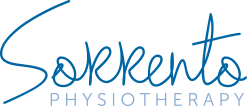Arthritis
/The word “arthritis” comes from the Greek word “arthros” meaning joint. The suffix “itis” refers to inflammation hence “arthritis” simply means “inflammation of a joint”.
The reasons for the joint inflammation are many and varied with close to 100 different types of arthritis identified. Some are associated with systemic (whole body) disease processes such as rheumatoid or other auto immune conditions processes which destroy joint surfaces resulting in chronic pain, stiffness and ultimately impaired function.
The most prevalent type of arthritis is osteoarthritis (OA) in which part or all of a joint erodes over a period of years.
Excessive or asymmetrical weight bearing through a joint over a prolonged period will eventually degrade the smooth articular cartilage covering the joint surface and lead to eventual fragmentation. (Diminished thickness of the protective cartilage eventually exposes unprotected bone).
There are many and varied reasons why some people are more predisposed to OA changes or, in an otherwise healthy individual, some people experience severe OA changes in a solitary joint.
Multiple joint and spinal OA changes may be the result of poor bone density (osteoporosis or osteopoenia) in which the bones are easily degraded. Biomechanical issues such as leg length discrepancy, flat feet, bow legged or knocked knee deformity are prime causative factors for individual joint OA changes.
In isolated cases, some people present with a thickened neck of femur (the connecting bony strut of the “ball” of the hip) which almost always results in hip joint OA early in life. This is known as a CAM deformity and can be identified in clinical examination and confirmed via x-ray.
The most important aspects of successfully managing any of the multiple forms of arthritis are:
· Early identification of possible biomechanical causes (flat feet, bow legged, knock kneed and leg length
discrepancies) and appropriate correction where possible.
· Obtaining a correct diagnosis of the type of arthritis and degree of severity of involved joints, to tailor an appropriate
response.
· Seek appropriate medical and allied health support to prolong normal function.
· Good nutrition and exercise to optimise bone density, increase joint range and restore muscle supportive strength.
· Appropriate bracing or orthotic devices to unload affected joints may be useful.
The ageing process inevitably leads to some joint degenerative changes. Maintain a good BMI (body mass index), undertake flexibility and strength work throughout life and seek appropriate professional support to successfully manage arthritis.
